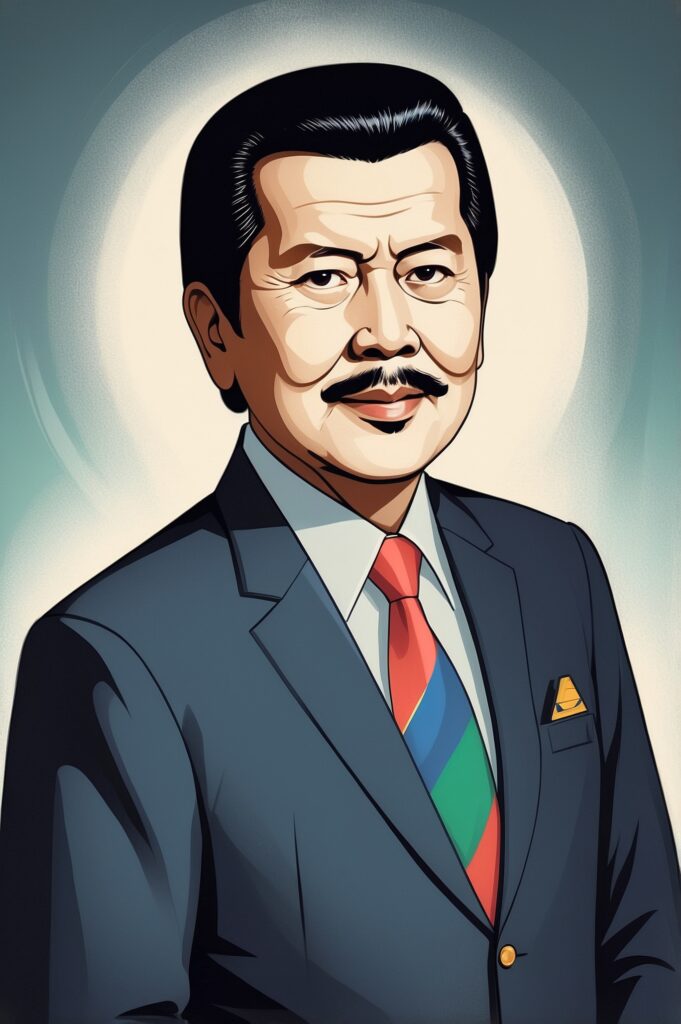Picture this: It’s 2001, and the Philippines has just gone through one of its most dramatic political transitions. Enter Gloria Macapagal-Arroyo (GMA), a Georgetown-educated economist who probably never imagined she’d be inheriting the presidency in quite the way she did. But here’s the thing about economists – they love their numbers, their plans, and boy, do they love infrastructure! GMA was no exception. Armed with her economic expertise and a vision that would make any urban planner swoon, she embarked on what would become one of the most ambitious infrastructure programs in Philippine history. From someone who spent years teaching economics at Ateneo de Manila University to becoming the country’s infrastructure champion, GMA’s journey is like that classic tale of “professor turns president” – except with more cement and steel involved!
The Numbers Game: Infrastructure Spending Under GMA
Let’s dive into the nitty-gritty of what actually happened during GMA’s tenure. Warning: We’re about to drop some serious numbers, but I promise to make it as painless as possible!
| Year | Infrastructure Budget (in Billion Pesos) | % of GDP | Major Projects Initiated |
|---|---|---|---|
| 2001 | 86.3 | 2.1% | North Luzon Expressway Rehabilitation |
| 2003 | 98.7 | 2.3% | South Luzon Expressway Expansion |
| 2005 | 121.5 | 2.6% | Subic-Clark-Tarlac Expressway |
| 2007 | 156.8 | 3.2% | Roll-on/Roll-off Port System |
| 2009 | 219.4 | 3.8% | Various Airport Modernization Projects |
Source: Department of Budget and Management (DBM) Historical Data, 2001-2010
The “Strong Republic” Transport Revolution: More Than Just Roads
When GMA declared her vision of a “Strong Republic,” she wasn’t just throwing around fancy political slogans – she was thinking about connecting islands, people, and economies. The Roll-on/Roll-off (RORO) transport system became her signature project, and let me tell you, it was revolutionary in more ways than one. Think of it as a giant game of connect-the-dots, except instead of a pencil, she was using massive ships to connect the Philippines’ 7,641 islands. The RORO system wasn’t just about boats – it was about bringing down the cost of transporting goods, making travel more accessible, and essentially turning the Philippine archipelago into one interconnected economic powerhouse.
The RORO Impact by Numbers:
| Metric | Before RORO (2001) | After RORO (2010) |
|---|---|---|
| Number of Routes | 0 | 36 |
| Ports Connected | 0 | 140 |
| Average Transport Cost Reduction | 0% | 40% |
| Travel Time Reduction | 0% | 30% |
Source: Philippine Ports Authority (PPA) Statistical Report, 2010
Beyond the Concrete Jungle: The Economic Impact
Here’s where GMA’s economist background really shines through. Every infrastructure project wasn’t just about pouring concrete and laying asphalt – it was part of a larger economic strategy. The impact was substantial, even if some of us were too busy complaining about traffic to notice (spoiler alert: infrastructure projects always cause traffic before they solve it!). The numbers tell quite a story, and for once, it’s not a boring one!
Economic Indicators During Infrastructure Push:
| Indicator | 2001 | 2010 | % Change |
|---|---|---|---|
| GDP Growth | 3.0% | 7.6% | +153% |
| Foreign Direct Investment | $1.8B | $4.6B | +155% |
| Tourism Arrivals | 1.8M | 3.5M | +94% |
| Employment in Construction | 1.5M | 2.5M | +67% |
Source: Philippine Statistics Authority (PSA) and Bangko Sentral ng Pilipinas (BSP)
The North-South Connection: Expressways and Economic Corridors
Remember when traveling from Manila to Clark was like preparing for an expedition? GMA changed that with the North Luzon Expressway (NLEX) rehabilitation and the construction of the Subic-Clark-Tarlac Expressway (SCTEX). These weren’t just roads – they were economic corridors that transformed Central Luzon into an investment magnet. The South Luzon Expressway (SLEX) expansion wasn’t far behind, making the journey to Calabarzon smoother than a baby’s bottom (well, almost!).
Major Expressway Projects:
| Project | Length (km) | Cost (Billion Pesos) | Impact on Travel Time |
|---|---|---|---|
| NLEX Rehabilitation | 84 | 21 | -50% |
| SCTEX | 94 | 34.9 | -60% |
| SLEX Expansion | 36 | 12 | -40% |
Source: Toll Regulatory Board (TRB) and Department of Public Works and Highways (DPWH)
The Airport Modernization Spree: Taking Philippine Aviation to New Heights
GMA’s administration didn’t just focus on ground transportation – they aimed for the skies too! The modernization of major airports across the country was like giving the Philippines’ aviation sector a much-needed makeover. From upgrading the Ninoy Aquino International Airport (NAIA) to developing the Diosdado Macapagal International Airport (now Clark International Airport), it was all about increasing capacity and improving service. Think of it as extreme makeover: airport edition!
Airport Development Projects:
| Airport | Investment (Billion Pesos) | Capacity Increase |
|---|---|---|
| NAIA Terminal 3 | 17.7 | +13M passengers/year |
| Clark International | 12.5 | +5M passengers/year |
| Cebu Mactan | 8.9 | +4.5M passengers/year |
| Davao International | 7.8 | +2M passengers/year |
Source: Department of Transportation (DOTr) Historical Records
The Critics’ Corner: Not All Roads Were Smooth
Let’s keep it real – no major infrastructure program comes without its share of criticism and controversy. Some projects faced delays, others went over budget (shocking, I know!), and there were the usual whispers about where all the money was going. But here’s the thing: when you’re trying to modernize an entire country’s infrastructure, some bumps in the road are inevitable. The key is looking at the bigger picture and the long-term impact, which, in many cases, we’re still benefiting from today.
The Environmental Angle: Green Infrastructure Before It Was Cool
Before “green infrastructure” became a buzzword, GMA’s administration was already incorporating environmental considerations into their projects. The Clean Air Act implementation saw the promotion of cleaner fuels and stricter emission standards. Various flood control projects were initiated, though Mother Nature occasionally reminded us that she’s still the boss when it comes to weather events!
Environmental Initiatives:
| Project Type | Number of Projects | Investment (Billion Pesos) |
|---|---|---|
| Flood Control | 78 | 15.6 |
| Watershed Management | 45 | 8.9 |
| Clean Air Initiatives | 23 | 5.7 |
Source: Department of Environment and Natural Resources (DENR)
The Legacy Continues: Infrastructure Projects That Keep on Giving
Many of the projects initiated during GMA’s term continued well beyond her presidency, setting the foundation for future developments. It’s like she planted infrastructure seeds that would grow into mighty economic trees (okay, that metaphor might be a stretch, but you get the point!). The blueprints and frameworks established during her administration influenced infrastructure development patterns that we still see today.
Conclusion: The Professor Who Built a Nation
Love her or hate her (and let’s be honest, Philippine politics is never short on strong opinions), GMA’s infrastructure legacy is hard to ignore. From connecting islands through RORO to modernizing expressways and airports, her administration’s focus on infrastructure development left an indelible mark on the Philippines’ physical and economic landscape. As we zoom along the expressways or hop on a RORO vessel today, we’re literally riding on the fruits of what was planted during her term. Sure, not everything was perfect, but in the grand scheme of things, the technocrat president showed us that sometimes, a little economic expertise goes a long way in nation-building.
Disclaimer: This blog post is based on publicly available data and historical records from various Philippine government agencies. While every effort has been made to ensure accuracy, some figures may have been updated or revised since their original publication. This article aims to provide an objective overview of infrastructure developments during the GMA administration (2001-2010). Please report any inaccuracies to our editorial team for prompt correction. The views expressed are intended to present historical facts and developments, not to make political statements or endorsements.




